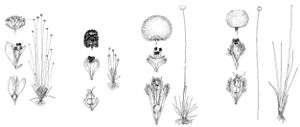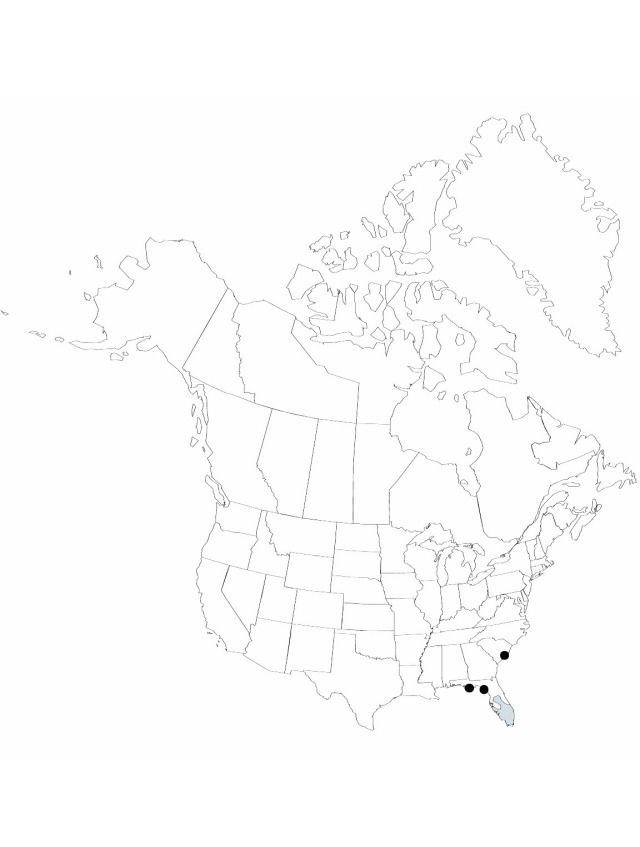Herbs, biennial or perennial, 4–20 cm. Leaves linear-attenuate, 3–7(–15) cm, apex subulate, flat. Inflorescences: scape sheaths shorter than leaves, loose; scapes filiform, 0.5 mm wide, 4–5(–6)-ribbed; heads gray-brown to dark gray, nearly globose or ovoid, 3–4 mm wide, relatively soft; receptacle glabrous or with sparse, clear hairs; outer involucral bracts usually not reflexed, not obscured by bracteoles and perianth, gray, ovate-oblong or broadly spatulate, 2 mm, margins nearly entire, apex narrowly rounded to acute, surfaces glabrous; inner bracts, receptacular bracts gray, very lustrous, narrowly ovate to oblong or spatulate, 2 mm, margins nearly entire, apex acute to acuminate or lacerate, glabrous. Staminate flowers: sepals 2, gray, oblong to oblanceolate, 1.5–2 mm, apex usually acute, glabrous; androphore narrowly club-shaped; petals 2, pale, scalelike, minute, glabrous, with inconspicuous glands; stamens 4; anthers black. Pistillate flowers: sepals 2, gray, narrowly oblong to lance-linear, 1.5–2 mm, apex acute, glabrous; petals 2, yellow-white, narrowly oblanceolate or oblong, 1.5–2 mm, apex acute, glabrous or with a few hairs at apex or adaxially, with inconspicuous glands; pistil 2-carpellate. Seeds dark brown, somewhat lustrous, broadly ellipsoid, 0.5 mm, conspicuously irregularly pale-reticulate, alveolae mainly rectangular.
Phenology: Flowering late summer–winter.
Habitat: Mildly acid sandy pineland swamps, particularly on wet fluctuating shores of shallow ponds toward coasts
Elevation: 0–100 m
Discussion
Of conservation concern.
Selected References
None.

